Chikungunya disease in nonhuman primates involves long-term viral persistence in macrophages
- PMID: 20179353
- PMCID: PMC2827953
- DOI: 10.1172/JCI40104
Chikungunya disease in nonhuman primates involves long-term viral persistence in macrophages
Abstract
Chikungunya virus (CHIKV) is a mosquito-borne alphavirus that induces in humans a disease characterized by fever, rash, and pain in muscles and joints. The recent emergence or reemergence of CHIKV in the Indian Ocean Islands and India has stressed the need to better understand the pathogenesis of this disease. Previous CHIKV disease models have used young or immunodeficient mice, but these do not recapitulate human disease patterns and are unsuitable for testing immune-based therapies. Herein, we describe what we believe to be a new model for CHIKV infection in adult, immunocompetent cynomolgus macaques. CHIKV infection in these animals recapitulated the viral, clinical, and pathological features observed in human disease. In the macaques, long-term CHIKV infection was observed in joints, muscles, lymphoid organs, and liver, which could explain the long-lasting CHIKV disease symptoms observed in humans. In addition, the study identified macrophages as the main cellular reservoirs during the late stages of CHIKV infection in vivo. This model of CHIKV physiopathology should allow the development of new therapeutic and/or prophylactic strategies.
Figures
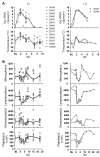
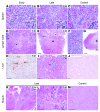
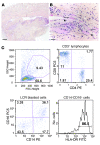
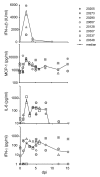
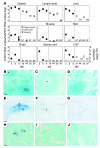

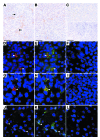

Comment in
-
A nonhuman primate model of chikungunya disease.J Clin Invest. 2010 Mar;120(3):657-60. doi: 10.1172/JCI42392. Epub 2010 Feb 22. J Clin Invest. 2010. PMID: 20179348 Free PMC article.
Similar articles
-
A nonhuman primate model of chikungunya disease.J Clin Invest. 2010 Mar;120(3):657-60. doi: 10.1172/JCI42392. Epub 2010 Feb 22. J Clin Invest. 2010. PMID: 20179348 Free PMC article.
-
Chronic joint disease caused by persistent Chikungunya virus infection is controlled by the adaptive immune response.J Virol. 2013 Dec;87(24):13878-88. doi: 10.1128/JVI.02666-13. Epub 2013 Oct 16. J Virol. 2013. PMID: 24131709 Free PMC article.
-
Chikungunya virus infection results in higher and persistent viral replication in aged rhesus macaques due to defects in anti-viral immunity.PLoS Negl Trop Dis. 2013 Jul 25;7(7):e2343. doi: 10.1371/journal.pntd.0002343. Print 2013. PLoS Negl Trop Dis. 2013. PMID: 23936572 Free PMC article.
-
Animal Models of Chikungunya Virus Infection and Disease.J Infect Dis. 2016 Dec 15;214(suppl 5):S482-S487. doi: 10.1093/infdis/jiw284. J Infect Dis. 2016. PMID: 27920178 Free PMC article. Review.
-
Chikungunya disease: infection-associated markers from the acute to the chronic phase of arbovirus-induced arthralgia.PLoS Negl Trop Dis. 2012;6(3):e1446. doi: 10.1371/journal.pntd.0001446. Epub 2012 Mar 27. PLoS Negl Trop Dis. 2012. PMID: 22479654 Free PMC article. Review.
Cited by
-
Mayaro Virus Pathogenesis and Transmission Mechanisms.Pathogens. 2020 Sep 8;9(9):738. doi: 10.3390/pathogens9090738. Pathogens. 2020. PMID: 32911824 Free PMC article. Review.
-
Pathogenic Chikungunya Virus Evades B Cell Responses to Establish Persistence.Cell Rep. 2016 Aug 2;16(5):1326-1338. doi: 10.1016/j.celrep.2016.06.076. Epub 2016 Jul 21. Cell Rep. 2016. PMID: 27452455 Free PMC article.
-
Mechanism and role of MCP-1 upregulation upon chikungunya virus infection in human peripheral blood mononuclear cells.Sci Rep. 2016 Aug 25;6:32288. doi: 10.1038/srep32288. Sci Rep. 2016. PMID: 27558873 Free PMC article.
-
Pathogenicity and virulence of chikungunya virus.Virulence. 2024 Dec;15(1):2396484. doi: 10.1080/21505594.2024.2396484. Epub 2024 Sep 1. Virulence. 2024. PMID: 39193780 Free PMC article. Review.
-
Development of a Hamster Model for Chikungunya Virus Infection and Pathogenesis.PLoS One. 2015 Jun 12;10(6):e0130150. doi: 10.1371/journal.pone.0130150. eCollection 2015. PLoS One. 2015. PMID: 26070211 Free PMC article.
References
-
- Brighton SW, Prozesky OW, de la Harpe AL. Chikungunya virus infection. A retrospective study of 107 cases. S Afr Med J. 1983;63(9):313–315. - PubMed
Publication types
MeSH terms
LinkOut - more resources
Full Text Sources
Other Literature Sources
Medical

